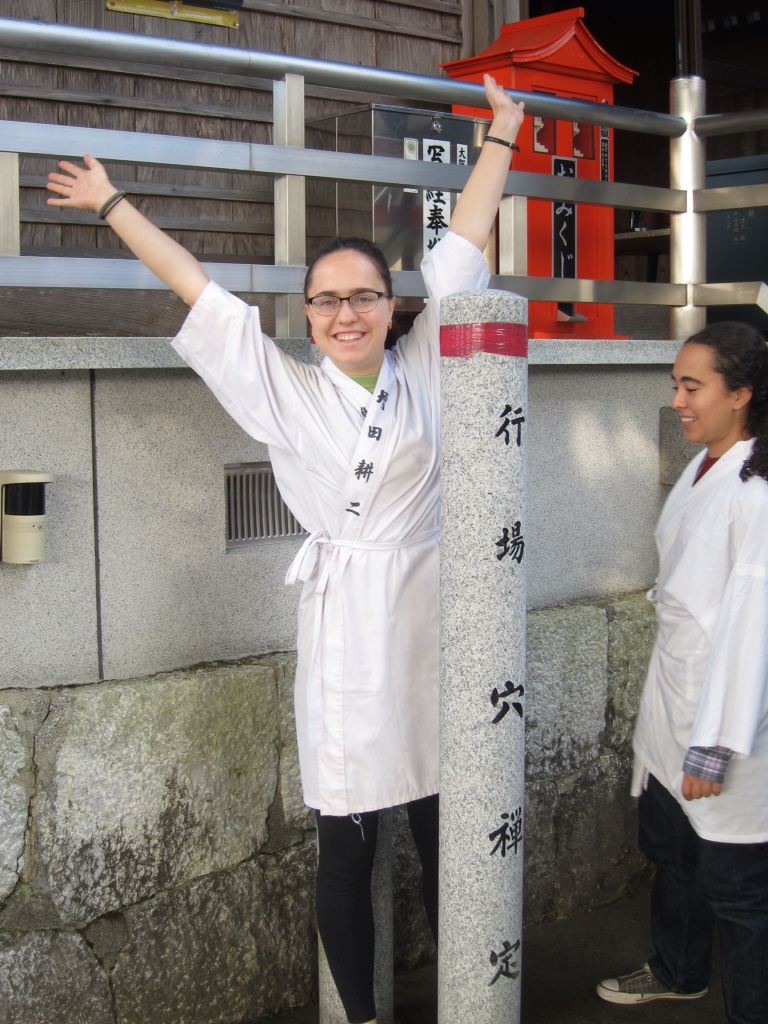It was another early day, this time driving up to Jigenji to do ana zenjô, a cave passage meditation. Kobo Daishi, the Buddhist monk who founded Koya-san, is reputed to have engaged a dragon and frozen it inside a cave above the temple precincts. It is a steep climb up to the cave entrance, worth it for the views of the rural Japanese countryside in the valley far below, even for those who were not planning on going into the cave.
The cave has some very narrow passages, before you go in you wriggle between two poles to be sure you won’t get stuck. It is a meditation done in darkness, and very physical, as you duck and crawl and stretch to get to the central part of the cave where you can see the dragon frozen in the rock. It is reminiscent of the womb meditation we did underneath Kiyumizudera, and of some of the James Turrell pieces we’ve discussed in my course. In its physicality and its Buddhist origins it also links back to our expedition with themountain ascetic Kosho up the mountain to satnd under the waterfall and be purified. Not everyone felt up to this meditation (for the record, I didn’t go into the cave, either!), it is not for those who find tight spaces too much of a stretch.
In the afternoon we visited Kamikatsu’s Zero Waste Academy, a model program for recycling. Kamikatsu residents sort their waste into over 50 different streams. Atsko Watanabe, who sits on the town council spoke to us about the program, including the ways in which this programming makes people more aware of the waste they generate.
After lunch at a cafe near the Zero Waste Academy, we stopped at the local onsen, or hot spring, to enjoy a Japanese bath. Tonight, Atsko-san and her husbanb Gufu-san have joined us to talk about their lives and work. The Rhetoric of Buddhist Meditation course has read A Different Kind of Luxury, which has an account of the Watanabe’s life. Gufu-san’s journals of his travels are works of art, incredibly detailed in both prose and illustrations. Many of the illustrations are simple line drawings but vividly capture the sense of a scene, others contain the sort of detail that comes from what the late Walter Burghardt SJ would call a contemplative perspective: “a long loving look at the real.”


